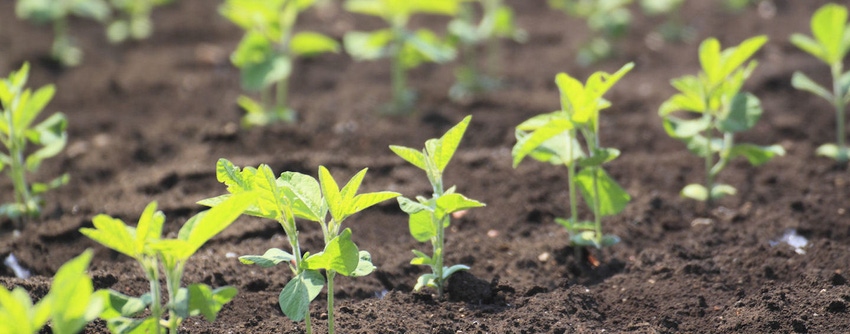April 28, 2016

Many planters now offer the ability to change seeding rates on the go as a standard or optional feature. But because soybeans may respond to seeding rate changes differently than corn, you should approach variable-rate seeding (VRS) strategies circumspectly, having clear justifications for increasing or decreasing seeding rates in management zones within fields.
By varying the seeding rate, you can match their yield potential to field conditions, which improves uniform and healthy stand establishment and maximizes the yield potential of each zone. Increasing soybean seeding rates can increase plant height and the height of the lowest pods and therefore, yield, when increases are matched to the right field conditions and varieties.
Defining Management Zones
The first step in implementing a VRS strategy is dividing the field into management zones. To be effective, each management zone should comprise an area of similar features that justify a common planting rate. In soybean VRS, basing management zones on soil properties or landscape position may be more useful than basing them on productivity or yield potential. For example, low-lying field areas are often wetter and colder at planting, increasing the risk of compaction, crusting, seedling diseases and, consequently, reduced stands. Another example of conditions impacting yield potential is eroded clay knobs or sand lenses that tend to be droughty, resulting in reduced plant and pod height.
Management zones may also be based on historical occurrence of stand issues and seedling disease infection. Therefore, if the areas were previously mapped, it is worth checking back to assess the right course of action. Depressed field areas with poor drainage are a dominant feature in Iron Deficiency Chlorosis (IDC) occurrence along with high calcium carbonate levels, high pH and high salts. If field areas vary in white mold pressure, lowering stands in white mold zones while maintaining higher stands in the rest of the field may help maximize whole-field yields.
Using VRS to Reduce IDC
In the Dakotas, we have cool wet soils with excessive moisture at times. Along with that we tend to have calcareous (high pH) soils which promote more IDC. Seeding rate modifications can help reduce chlorosis symptoms. Significantly higher populations in IDC hot spots may reduce symptoms in soils with high pH levels and IDC, allowing young plants to survive the chlorotic death phase and preserve yield potential. Furthermore, chlorosis and stunting symptoms of IDC are greatly reduced where population is higher at intersection of rows and end rows. In IDC-prone zones, seeding rates of 200,000 to 250,000 seeds-per-acre are recommended to reduce chlorosis symptoms.
Soybean VRS Implementation
Compared to establishing a VRS strategy for corn, a soybean prescription is simpler. Fewer management zones need to be identified, and fewer unique seeding rates need to be applied throughout the field.
In field areas that require a higher seeding rate due to soybean stand establishment challenges or plant and pod height issues, seeding rates should be at least 10 to 20 percent above the normal rate to provide a meaningful difference.
In-season measurements of plant population (and where appropriate, plant and pod height measurements) in adjacent “check” and “normal” strips may prove useful in understanding any yield differences at harvest.
Johnson, Watertown, S.D., is a DuPont-Pioneer agronomist
About the Author(s)
You May Also Like




